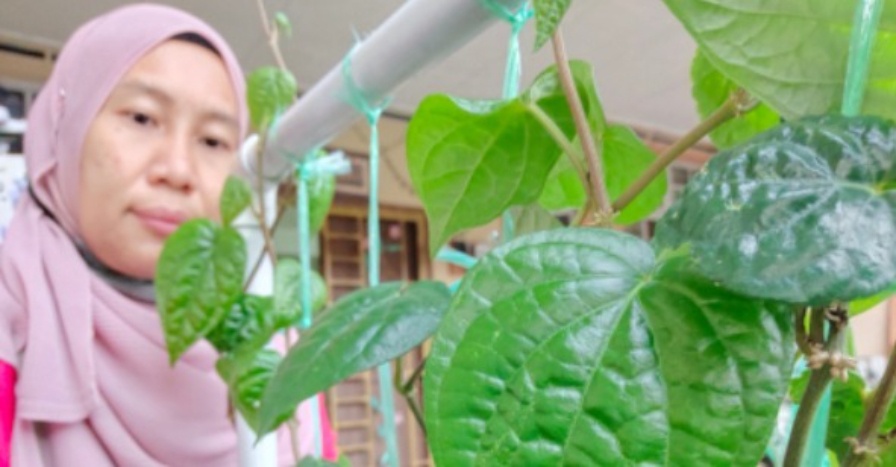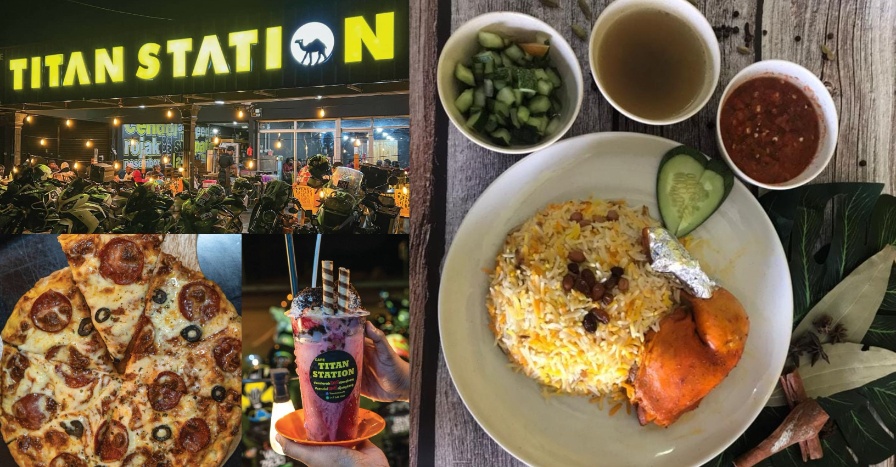KUALA LUMPUR (Bernama) – Malaysia’s rainforests are endowed with a multitude of herbs that are believed to have medicinal and nutritional values.
Popular herbs such as rosary pea, gotu kola (better known aspegaga), mint orpudinaandeurycoma longifolia(commonly known astongkat ali)possess great potential to expand their reach in the field of modern medicine.
The government, in fact, had identified herbs as a new source of economic growth for Malaysia more than a decade ago. In 2011, the herbal industry was selected as one of the first entry point projects (EPP 1) under the agriculture new key economic areas (NKEA) in the economic transformation programme which commenced in early 2011.
Senior lecturer at the Department of Molecular Medicine, Faculty of Medicine, Universiti Malaya, Associate Prof Dr Nurshamimi Nor Rashid said under EPP 1, 10 types of herbs were identified as having great potential to be developed for use, particularly in the field of medicine (including alternative medicine) and as food products.
The 10 herbs aretongkat ali,pegaga, roselle, ginger,kacip fatimah(Labisa pumila),misai kucing(Orthosiphon stamineus),dukung anak(Phyllanthus),hempedu bumi(Andrographis paniculata),mas cotek(Ficus deltoidea)andmengkudu(Morinda citrifolia,commonly known asnoni).
Dr Nurshamimi, however, told Bernama only limited studies have been carried out in this country on the use of herbs for medicinal purposes.
FINDINGS PROMISING
She said although 10 herbal plants have been identified under EPP 1, most local studies on the use of these herbs for anticancer purposes have not been in-depth, unlike in western countries where various studies have been carried out to unearth the benefits of herbs, leading to the production of antiaging, antiviral, anticancer, anti-inflammatory, antibacterial and other products.
Meanwhile, studies carried out by Dr Nurshamimiand a team of researchers from Universiti Malaya onnonihave yielded promising results – they recently succeeded in developing a key compound fromnoniextract for use as an antiproliferative agent for colorectal cancer (CRC).
This compound was found to have the ability to reduce colorectal cancer cells from proliferation, as well as suppress the function of the mutated tumour suppressor genes in colorectal cancer.
The team’s study also revealed the compound’s potential to be commercialised for use in alternative medicine.
Pointing out that CRC is the second most common cancer in Malaysia, Dr Nurshamimi said the majority of CRC patients only sought treatment when they were at the end-stage and usually with a poor prognosis.
“Most CRC patients have gene mutations that control cell growth and these mutated genes cause normal cells to turn into cancerous cells.
“KRAS is among the gene mutations that occur in CRC patients (the KRAS mutation is an error in a protein in normal cells). These patients will not benefit from anti-EGFR (epidermal growth factor receptor) therapies; on the other hand, alternative treatment may help to stop the growth of the cancer cells,” she said.
According to Dr Nurshamimi, thenonicompound developed by her team targets mutated genes such as KRAS.
“An advantage of using this herb is that it is less toxic to the normal cells in the body and it is only directed at the cancer cells,” she said, adding that their study also found that thenonicompound was able to reduce the growth of the colorectal cancer cells and mutations in the tumour cells.
While acknowledging the need to continue with existing medications used in the treatment of CRC, Dr Nurshamimi, however, said they usually have side effects on patients.
“To overcome problems that arise from existing treatments, there is a need to develop new compounds from herbs that are safer and more effective,” she added.
MANY BENEFITS
Dr Nurshamimi and her team, meanwhile, have also carried out a study on the antiaging properties of betel leaves (daun sirih) and, according to their preliminary findings, compounds extracted from this herb showed significant antiaging effects.
Currently, the researchers are carrying out a more in-depth study on this process to look into the possibility of developing an antiaging cream, said Dr Nurshamimi, adding that for this stage of their study, they are using an animal model via collaboration with the Malaysian Agricultural Research and Development Institute (MARDI).
The findings from their ongoing study have won them a special prize and gold award at the Korean International Women’s Invention Exposition 2021.
Mahani Amat, a senior agriculture officer at the Agricultural Extension Division, University Community Transformation Centre, Universiti Putra Malaysia, also acknowledged that herbs have their own potential that can be commercialised as per the findings of herbalists and university researchers.
She said that based on Ministry of Entrepreneur and Cooperative Development statistics, the market value of the domestic herbal industry was estimated at RM32 billion in 2020.
“It (market value) is expected to continue to rise based on public acceptance of herbal products that have been diversified and not just limited to traditional medicines. COVID-19 has also led to people prioritising their health,” she said.
The herbal industry value chain starts from cultivation right up to the research, production technology and packaging stages, she said, adding that the marketing and product assurance aspects must be strengthened to enable Malaysia’s herbal products to compete with their foreign counterparts.
“If the herbal industry value chain complements each other, it is not impossible for Malaysia to become the world’s largest herbal product hub due to its climate which is suitable for the cultivation of most herb species,” said Mahani, who grows various herbs such asjerangau,pegagaandsirehin her garden at home.
She also said that the government should focus on herbs that can be developed as an alternative food for animals to overcome the problem of rising prices of animal feed.
“For example, the use ofdaun ketum ayam(Trichanthera gigantea) as an alternative feed for chickens is popular among farmers. This particular herb is found to have high protein content and more research must be carried out to explore its benefits in more depth. Perhaps, in future, freshdaun ketum ayamcan be processed in the form of pellets,” she said.
Sources: BERNAMA








